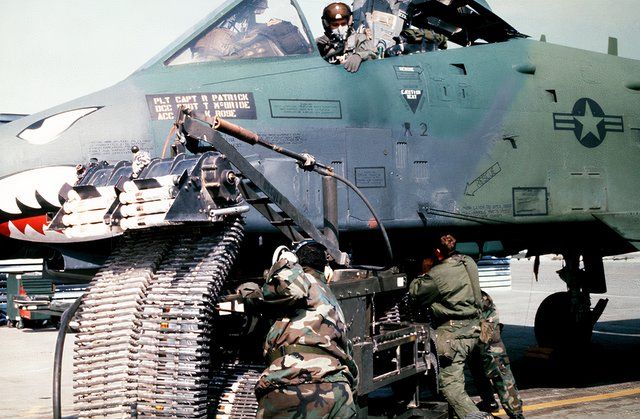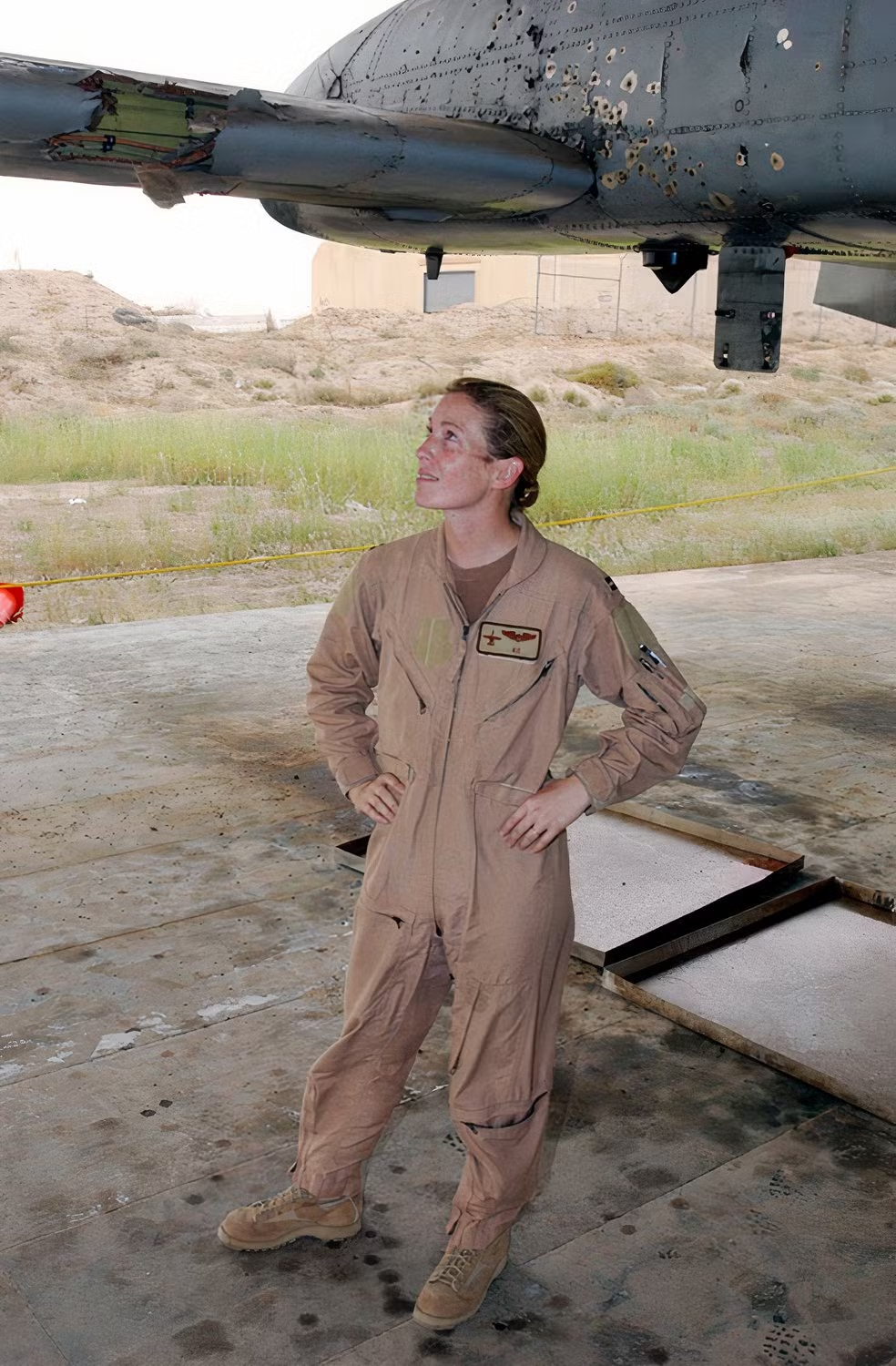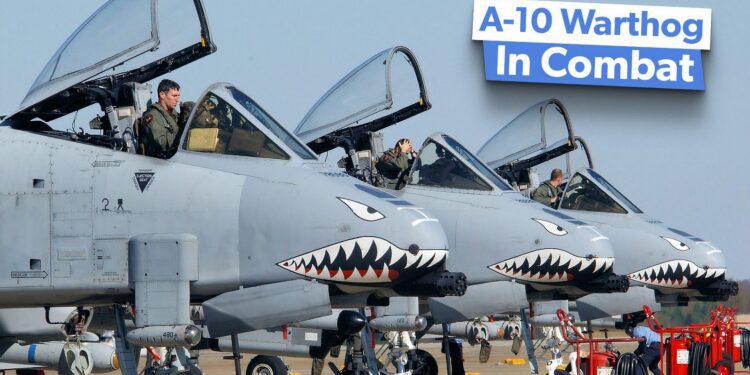Quick LinksUS Warthog’s combat record for the ages
Fairchild Aircraft began developing the A-10 Warthog in 1971 and produced 716 aircraft from the A-10. The company’s contribution to aviation stopped when it sold all of its assets to M7 Aerospace, headquartered in San Antonio, Texas. However, Northrop Grumman Corporation acquired the A-10 original manufacturing team and all A-10 assets from Fairchild in 1987.
Photo: Master Sgt. Russ Scalf | DVIDS
The A-10 Thunderbolt II, also known as the Warthog or Hog due to its rugged, bulky shape, is a Close Air Support CAS aircraft designed to protect allied forces on the ground. Deployed in the Desert Storm Operations in Kuwait and Iraq during the early nineties, Operation Noble Anvil during the Yoguslav War in the Balkans, Operation Enduring Freedom in Afghanistan, and many global missions.
Northrop Grumman integrated with Lockheed Martin to maintain continuous involvement in developing the Low Altitude Safety and Targeting Enhancement ground collision avoidance system and the Night Vision Imaging System. They also enhanced the airframe maneuvering spectra for various missions or structural changes.
Feature
Specification
Engines
Two General Electric TF34-GE-1 00 turbofans
Speed
0.56 MACH (420 MPH, 676 km/h)
Maximum Takeoff Weight
51,000 lbs (22,950 kg)
Fuel capacity
11,000 lb (4,990 kg)
Hardpoints
(11) 8 under-wing + 3 under-fuselage, 16,000 lb (7,260 kg) capacity
Guns
30 mm GAU-8/A Avenger rotary cannon with 1,174 rounds
The aircraft’s fuel tanks are protected by fire retardant foam, and all controls are duplicated for on-spot recovery. The two engines are mounted on the rear fuselage, enhancing their resistance to anti-aircraft fire.
US Warthog’s combat record for the ages
They are survivable twin-engine jet aircraft capable of taking down light maritime attack aircraft as well as all ground armored targets.
The aircraft was also utilized for airborne forward air control and combat search and rescue operations. The first A-10A production was delivered to the 355th Tactical Training Wing at Davis-Monthan Air Force Base, Arizona, in October 1975.
Early deployments in Europe, Osan, and Grenada
Although the War in Vietnam ended in 1975, the US Air Force continued to demand the Warthogs to defend the NATO allies in Europe from any Soviet aggression. So, the A-10 served to prevent the threat of Soviet tanks from bases in Britain and West Germany until the 1980s. The Hog arrived at Osan Air Base in South Korea for a familiarization tour in 1977.

Photo: TSGT Curt Eddings | The US National Archives
During Operation Urgent Fury in Grenada, A-10s of the 23rd Tactical Fighter Wing provided air support to Allied forces. They were later reassigned to the 21st Tactical Air Wing and redesignated as Para-Jumpers or PJs. In 1987, many A-10s were shifted to the forward air control role and redesignated OA-10s.
Warthog’s Armament
Quantity
Details
LAU-61 G/A
4
Extended Length Launcher 19 (2.75 inch/70mm) rockets per pod
LAU-68
6
ELL 7 (2.75 inch/70mm) rockets per pod
LAU-131
6
7 Hydra 70 mm rockets per pod
AIM-9 Sidewinder
2
Air-to-air missiles
AGM-65 Maverick
6
Air-to-ground missiles
SUU-42A/A
Flares dispenser pod/infrared decoys
Mark 80 series
Unguided iron bombs
Mk 77
Incendiary bombs
Cluster bombs
CBU-52/58/71/87/89/97, BLU-27/B, BL755, BLU-1, CBU-20 Rockeye II
Desert Storm Gulf War
Operation Desert Storm marked the first time the Warthog flew 8,100 sorties in combat, destroyed two Iraqi helicopters, 987 tanks, 2,000 vehicles, and 1,200 artillery pieces, 53 Scud missiles, and launched 90% of the AGM-65 Maverick missiles.

Photo: SGT. Prentes Trambue | The US National Archives
The A-10’s effectiveness in the Gulf War, with a mission-capable rate of 95.7%, was praised. At the end of operations, sadly, two of its pilots were killed, and six Warthogs were lost from 132 aircraft.
As soon as we landed at King Khalid Military City Airport, we were asked if we wanted to fly again. We’d already been in the cockpit for eight hours. We did what I think most A-10 pilots would. Again rearmed and refueled, we were ordered back to Kuwait City to support Marines taking heavy fire.
First Lieutenant A-10 wingman in The Smithsonian
The Bosnian War and Operation Deliberate Force ODF
Between 1994 and 1995, A-10s fired around 10,000 30 mm rounds in the Bosnian War. After the seizure of heavy weapons by Bosnian Serbs, multiple sorties were launched to locate and destroy the captured equipment. On August 5, two US A-10 Thunderbolts strafed a Bosnian Serb anti-tank vehicle near Sarajevo after the Serbs seized impounded weapons and attacked a UN helicopter.

Two A-10s chased an anti-tank vehicle in August 1994, and the Serbs agreed to return the remaining heavy weapons. NATO launched Operation Deliberate Force ODF in August 1995 to undermine the operational strength of the Army of Republika Srpska, and A-10s resumed patrols in late September.
Operation Allied Force in Kosovo
Warthog squadrons were commissioned in three roles: CAS, forward air controller AFAC, and Combat Search And Rescue CSAR. The 81st Fighter Squadron deploys six A-10s to Italy to support Joint Forge and is extended indefinitely with 15 A-10s.
Operation Allied Force OAF began with combat operations against Serbian forces, and the Yugoslav government broke off diplomatic relations with the US, France, Germany, and the UK. An F-117 was lost near Belgrade, but a successful Warthog CSAR effort recovered the pilot.
Combined Air Interdiction of Fielded Forces CAIFF began operations but is limited to Kosovo penetration. A shoulder-fired missile hits an A-10 AFAC, but the warhead does not detonate. On June 30, 1999, A-10s ceased CSAR and closed air support alert as NATO occupation forces entered the Kosovo Engagement Zone.
20 years in Afghanistan
In March 2002, The Hogs were deployed to Pakistan and Bagram Air Base, a former US base in North East Afghanistan, for Operation Anaconda to destroy al-Qaeda and Taliban forces, a campaign against the Taliban and Al-Qaeda. After returning to Afghanistan, they continued fighting the remnants of the Taliban.
The A-10 was involved in the killing of 35 Afghan civilians and 10 US troops in friendly fire between 2001 and 2015 and flew over 11,189 sorties in the first half of 2013 only. Then, in 2018, 12 A-10s from the 303d Expeditionary Fighter Squadron were deployed to Kandahar Airfield, marking the first deployment in over three years until the US withdrawal from Afghanistan in 2021.
Operation Iraqi Freedom
Operation Iraqi Freedom began in 2003, with 60 OA-10/A-10s participating in early combat. The A-10s had a mission-capable rate of 85% and fired 311,597 rounds of 30 mm ammunition. They also flew 32 missions to airdrop propaganda leaflets. A single A-10 was shot down near Baghdad International Airport by Iraqi fire.

Photo: Courtesy photo | af.mil
The fleet was modernized under the
Precision Engagement Program
. Improved fire control resulted in the A-10C, which flew to Eglin in 2005. The A-10C adds Integrated sensors, a Helmet-Mounted Cueing System HMCS to enhance situational awareness, a Hands-on Throttle and Stick, digital store management, and a color cockpit Multi-Function Display.
The A-10C debuted in combat during Iraqi Freedom in 2007 and operated under 1,000 ft (304.8 m) ceilings, including at night.
The Operational Flight Program OFP continuously updates the A-10’s systems and software, and the program will shift to more frequent rolling software upgrades. Between 2009 and 2012, the number of sorties varied between 27,800 and 34,500 yearly.
More missions and combats
Operation Odyssey Dawn: Six A-10s were deployed to Libya as part of offensive operations on the regime and an attack on Libyan ground forces in March 2011. Operation Inherent Resolve: The 122nd Fighter Wing dispatched 12 A-10s to the Middle East to combat ISIL in June 2014. A-10s struck ISIL targets daily in Iraq. Operation Tidal Wave II: A-10s and AC-130s destroyed six “key oil fields” in Syria, as well as several oil wells in Iraq in October 2015. Operation Inherent Resolve: The 74th Expeditionary Fighter Squadron EFS successfully targeted 44% of targets, eliminating ISIS from 99% of Iraq and Syria, using only 12 Warthogs from July to October 2017. Red Sea Crisis: The A-10 Thunderbolt underwent air support aircraft against the Yemeni Houthi’s Red Sea threat in January 2024.
For more than 45 years, the USAF has relied on the A-10 Thunderbolt II as its primary close air support aircraft. Air-to-ground strikes have taken precedence over dogfighting during operations.
The CAS aircraft features high maneuverability, an armored airframe, the ability to use both unguided and guided munitions, a short takeoff and landing distance, and minimal logistical and maintenance requirements.

Photo: Capt. Kippun Sumner | af.mil
The single-pilot Hog has only been flown by the United States Air Force, the Air Force Reserve Command AFRC, and the Air National Guard. As of 2017, 282 A-10C aircraft were reported as operational.
Most of the Warthog fleet is approaching the end of its service life. To replace the A-10, the Future Air Force Close Air Support Aircraft FAFCAS must have low operating costs, slight logistical requirements on the ground, high mobility at low speeds, and ground fire resistance.
 How Many A-10 Warthogs Are Still In Service?
How Many A-10 Warthogs Are Still In Service?
The jet is still a key part of the US Air Force’s ground strike operations.
Source link : http://www.bing.com/news/apiclick.aspx?ref=FexRss&aid=&tid=67298e39d62b46989d9965e8c839afe2&url=https%3A%2F%2Fsimpleflying.com%2Fwhat-is-combat-record-of-a-10-warthog%2F&c=16535482966718501185&mkt=en-us
Author :
Publish date : 2024-11-04 11:32:00
Copyright for syndicated content belongs to the linked Source.









